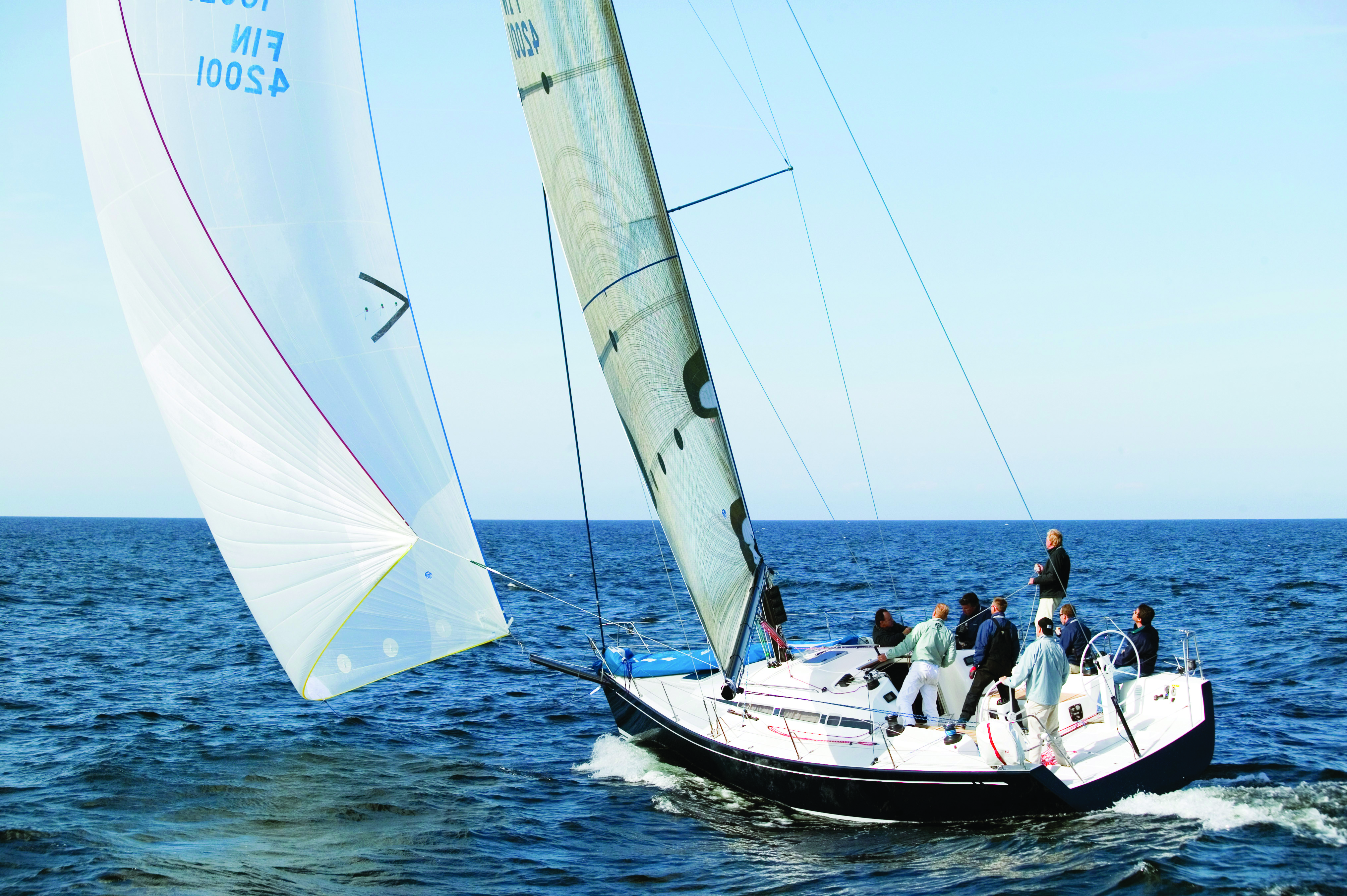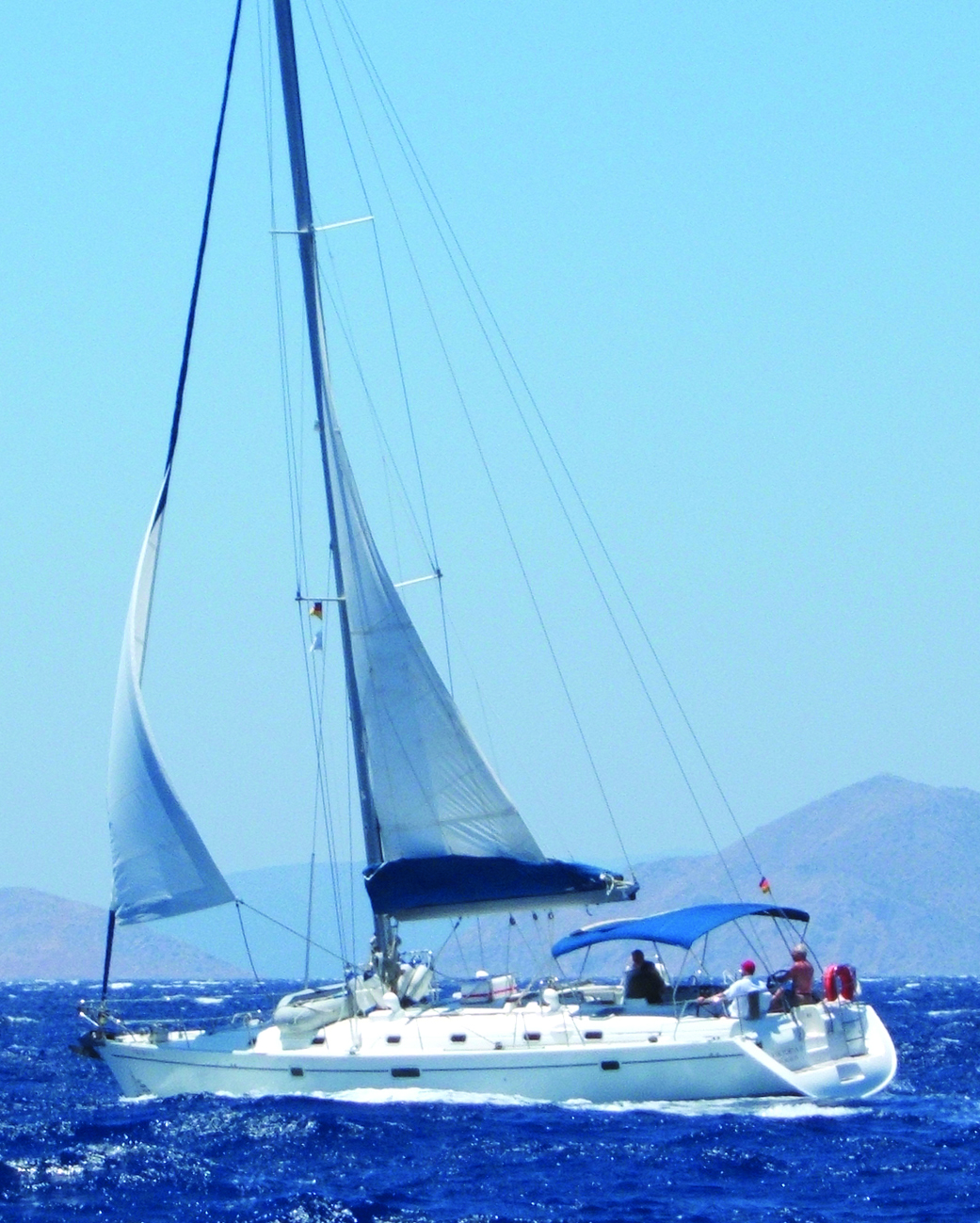Buying An Inshore / Coastal Cruiser
Book Extract
To my mind, branding a yacht as an ‘inshore’ or ‘coastal’ cruiser is somewhat misguided, but unfortunately these expressions are commonly used in the industry. As far as I’m concerned a sailing yacht that is designed to go to sea in tidal waters is just that – a yacht.
So what makes an ideal sailing yacht for coastal cruising? Obviously when cruising within sight of land and stopping overnight at anchor, on a visitor’s buoy or marina berth it isn’t necessary to have a boat that will withstand storm-force conditions. This is simply because it will be quite rare for you to experience such weather when keeping within sight of land and within earshot of a reliable weather forecast. Some of you might well prefer to buy an ocean-going yacht even for coastal cruising, as a ‘belt and braces’ precaution, and I wouldn’t want to deter you from doing so, but in general, prospective yacht owners need to know that it’s perfectly safe to go coastal pottering in something less robust than a hurricane-proof ocean cruiser.

A lightweight, fast performance yacht can get you home quickly if needed
Some experienced yachties swear by lightweight, fast, performance boats for coastal sailing. The theory is that if the yacht is fast and can still be safely sailed in winds up to and including Beaufort Force 7, then you’re more likely to reach shelter before the worst of any weather system can hit you. In certain ways there is good logic to this, providing you’re not caught out in an unpredictable storm one day with a rather flighty, lightweight racer/cruiser in which to do battle with big seas.
This suggestion, though, goes against a well-established golden rule in sailing – if the weather blows up head out to sea, giving yourself enough sea room to analyse and fix any problems. In many cases the closer you are to the coast in stormy weather, the greater your chances of running into trouble, so a well-found yacht will make this option a safe and comfortable one.
Staying out during a storm is, of course, contrary to one’s natural instinct for survival – to sail as fast as possible for the nearest safe haven – and it often requires considerable determination not to choose what looks like the easy way out. But unless your haven is a large, well sheltered harbour with an entrance that is safe to negotiate under sail in all conditions, then you’re better off waiting it out well offshore where the waves are usually less steep and you don’t have to worry about rocks or other vessels heading into port.
My ideal coastal cruising yacht is a compromise between a reasonably fast, fun-to-sail day-sailer and a boat that can withstand the occasional blow and 2 m high waves without frightening or throwing my crew around – particularly if I have my grandchildren on board. There are quite a few of these boats around and for a decent price as well, if you’re prepared to do a little work on them.

Running for a safe harbour is not always the right answer
© Not to be reproduced without written permission from Fernhurst Books Limited.
The Insider’s Guide To Choosing & Buying A Yacht is written by Duncan Kent. Duncan Kent has been sailing for 40 years and writing about sailing yachts for 30 of those. As former Sail Editor of Boat International, Technical Editor of Yachting Monthly and Editor of Sailing Today, Duncan has test-sailed nearly a thousand yachts between 20-300ft long, costing from £500 to £50m. He is still writing regularly as a freelancer for Yachting Monthly, Practical Boat Owner and Sail magazine on all the technical aspects of sailing yachts and their systems.